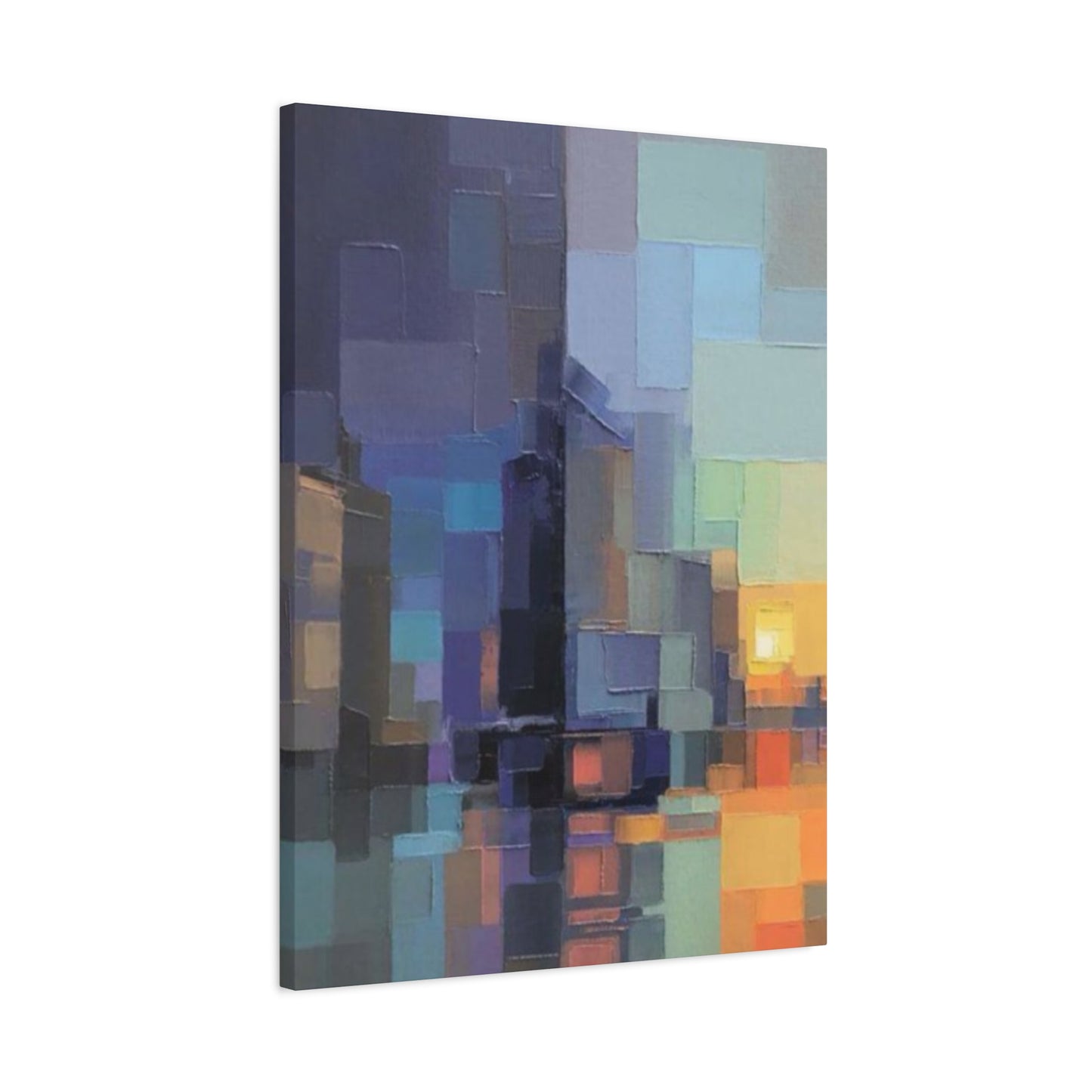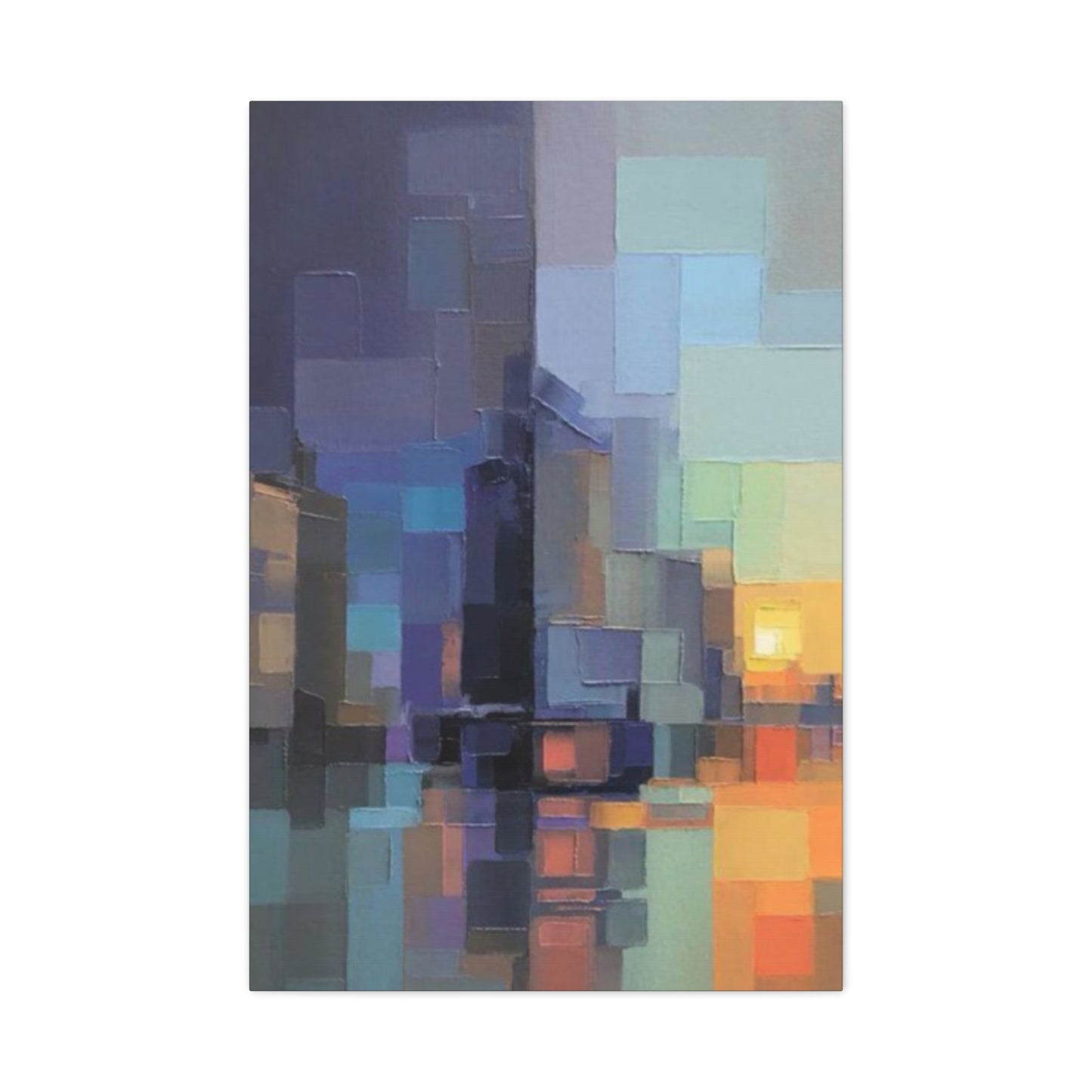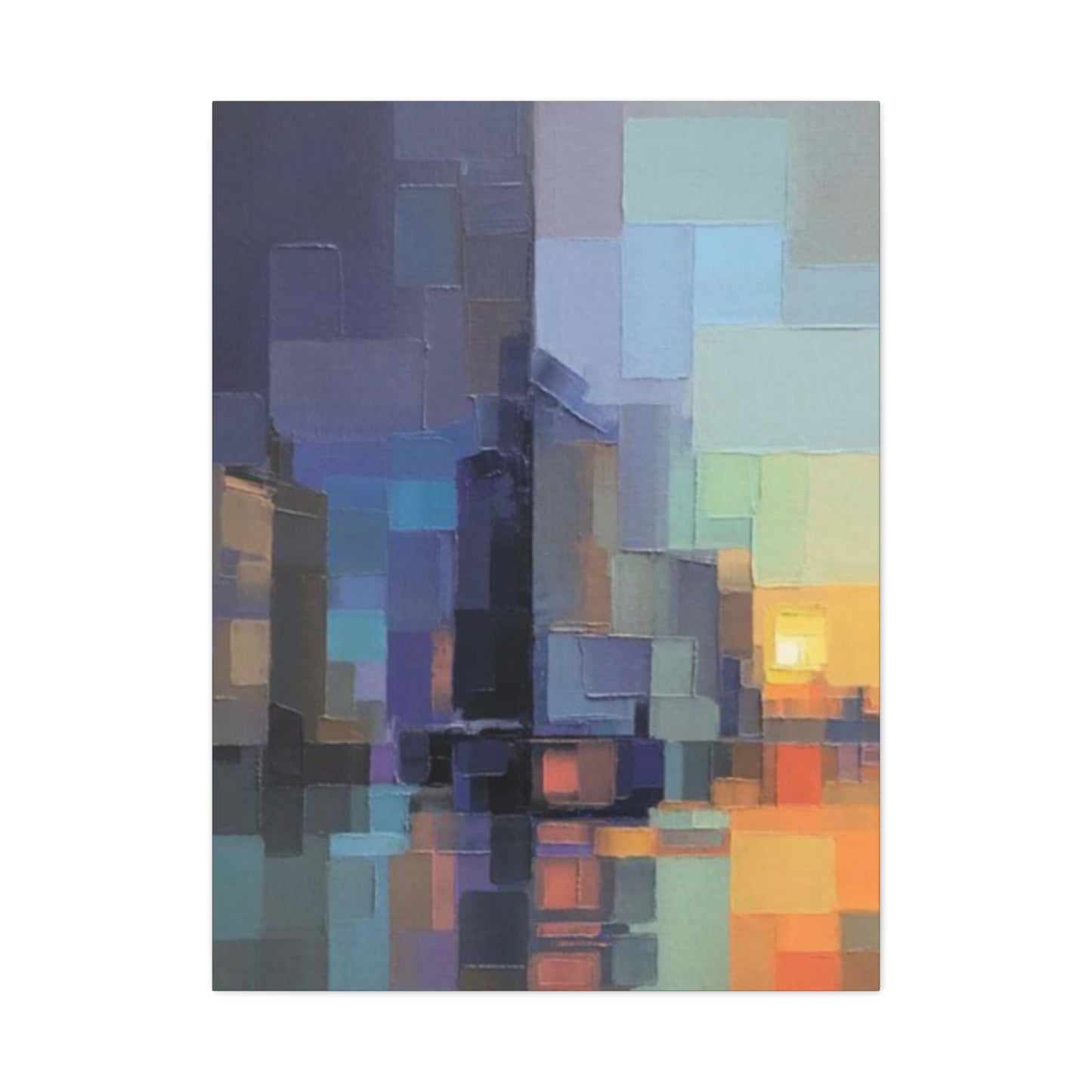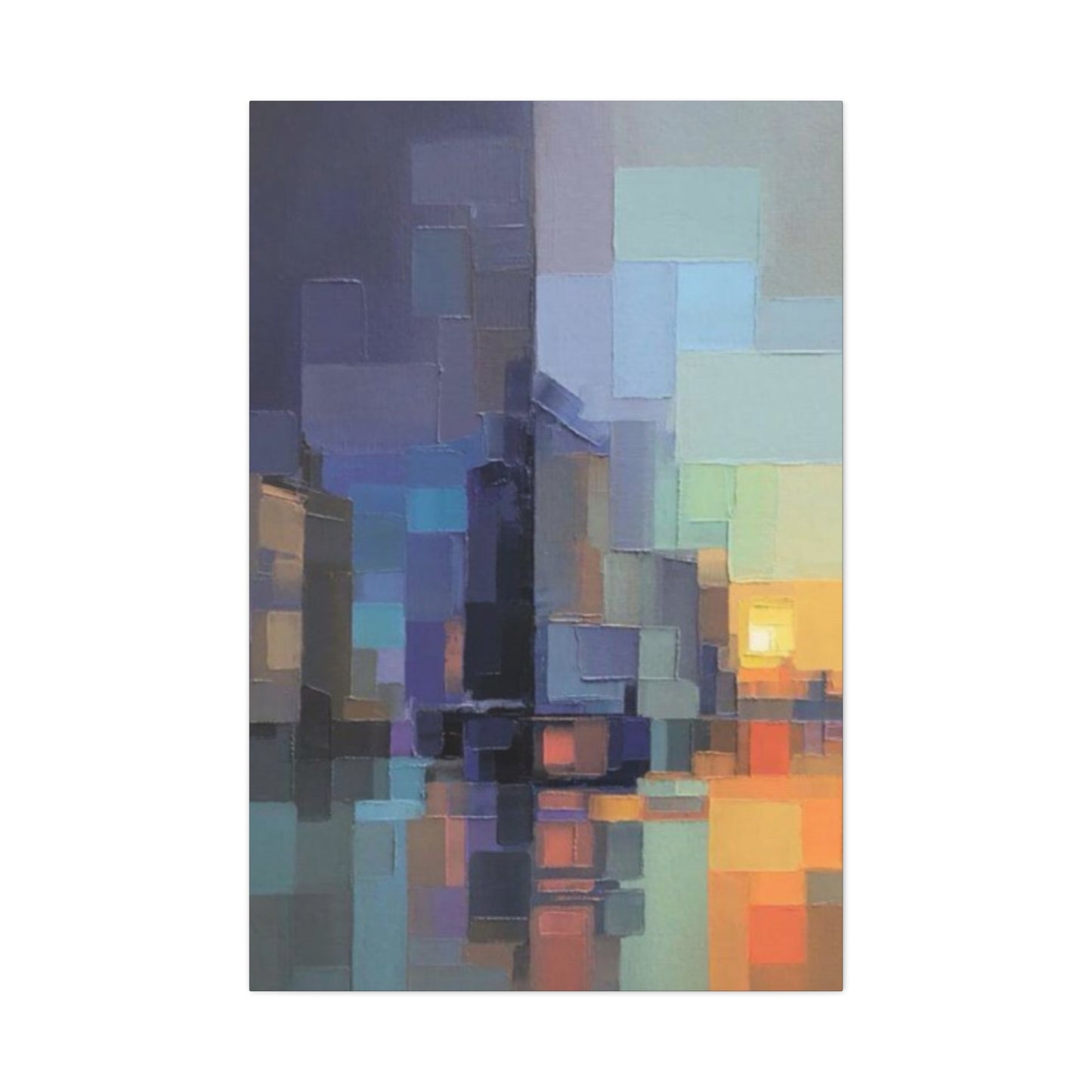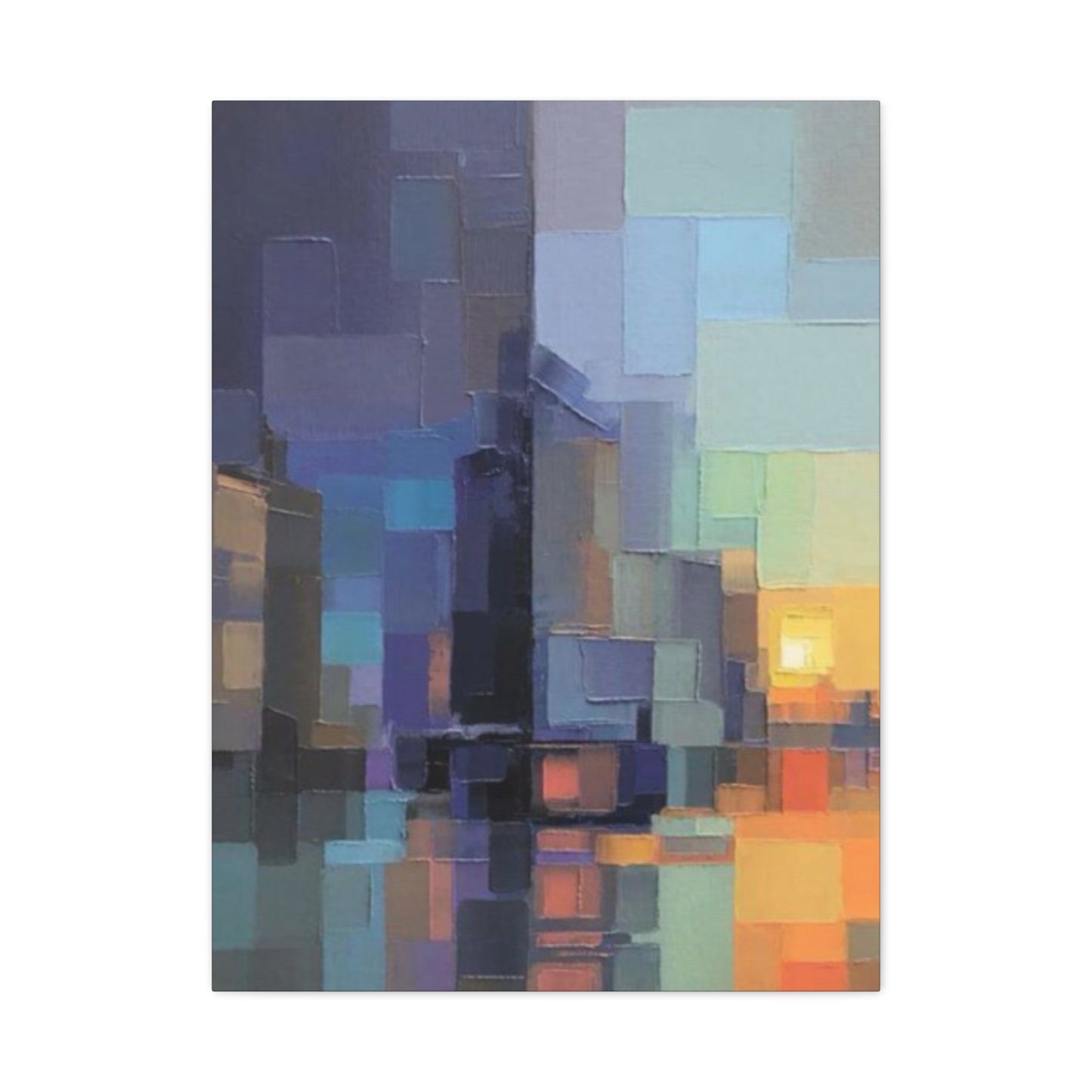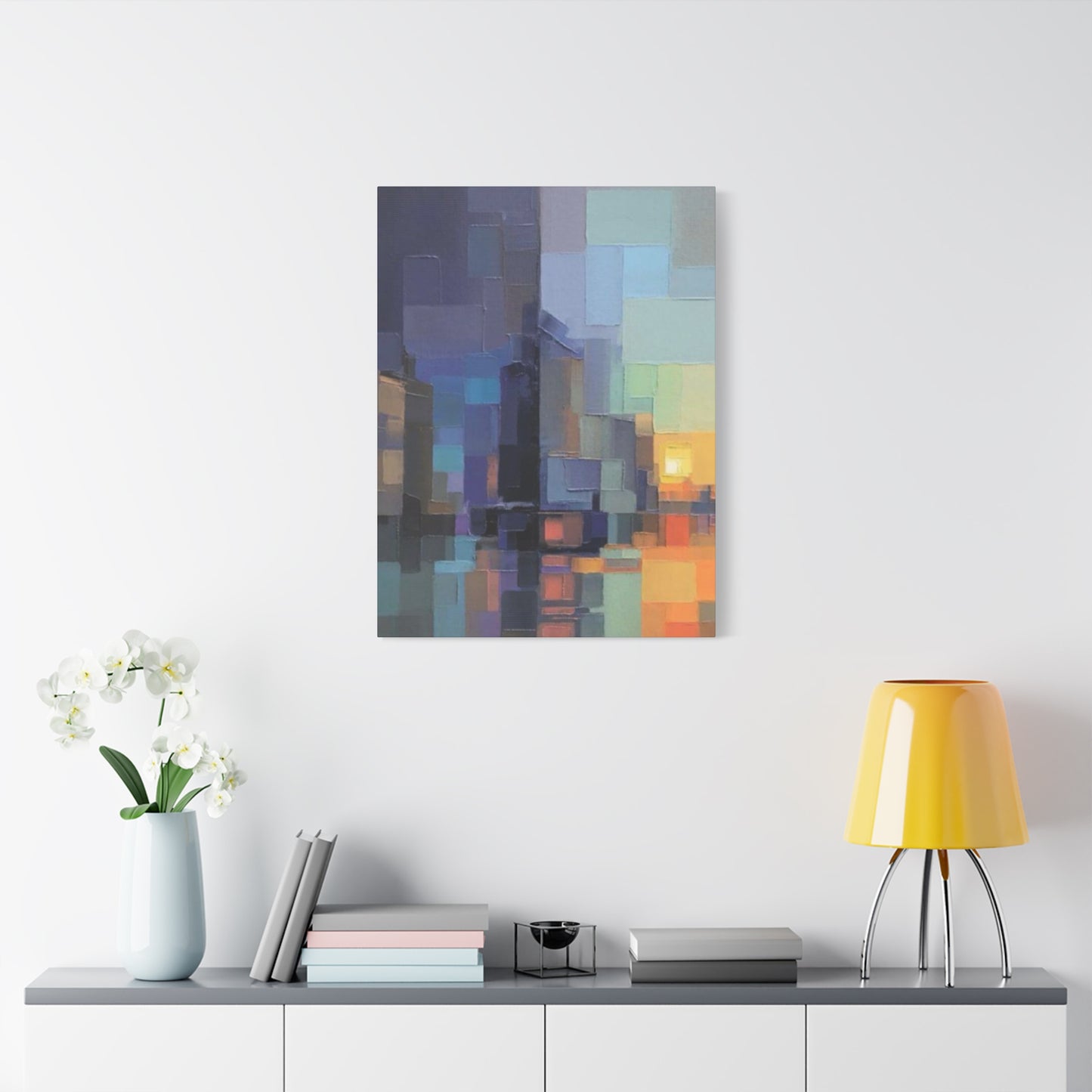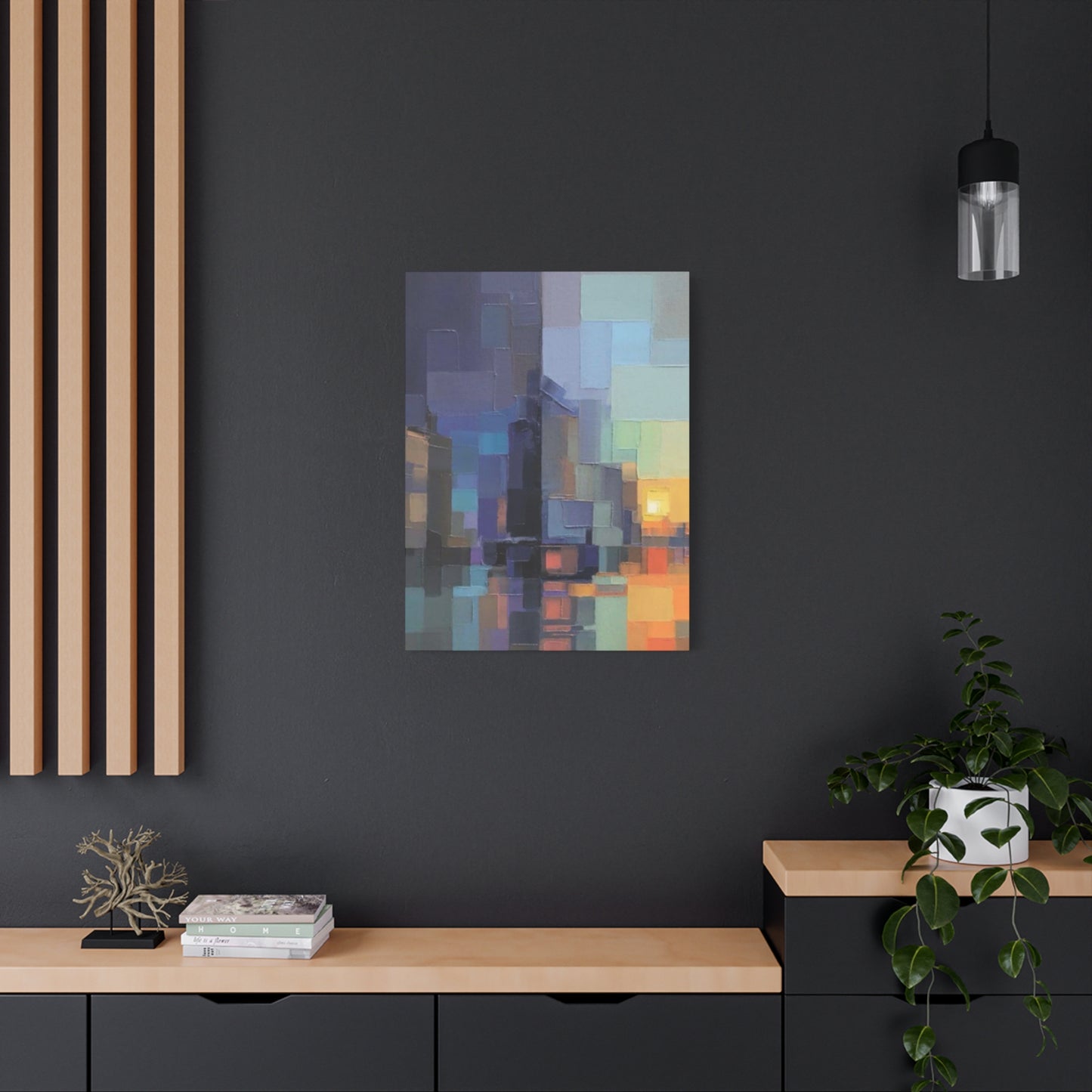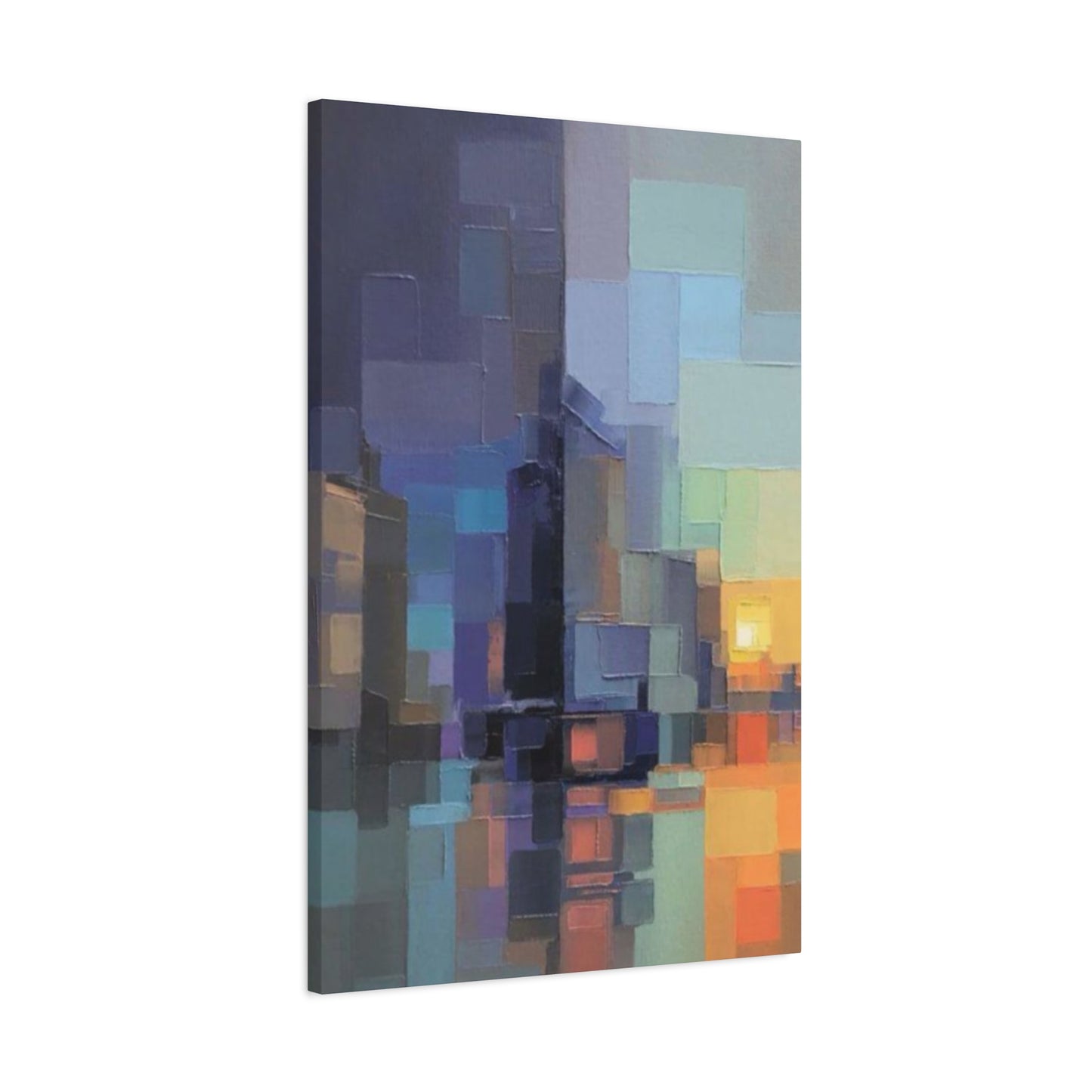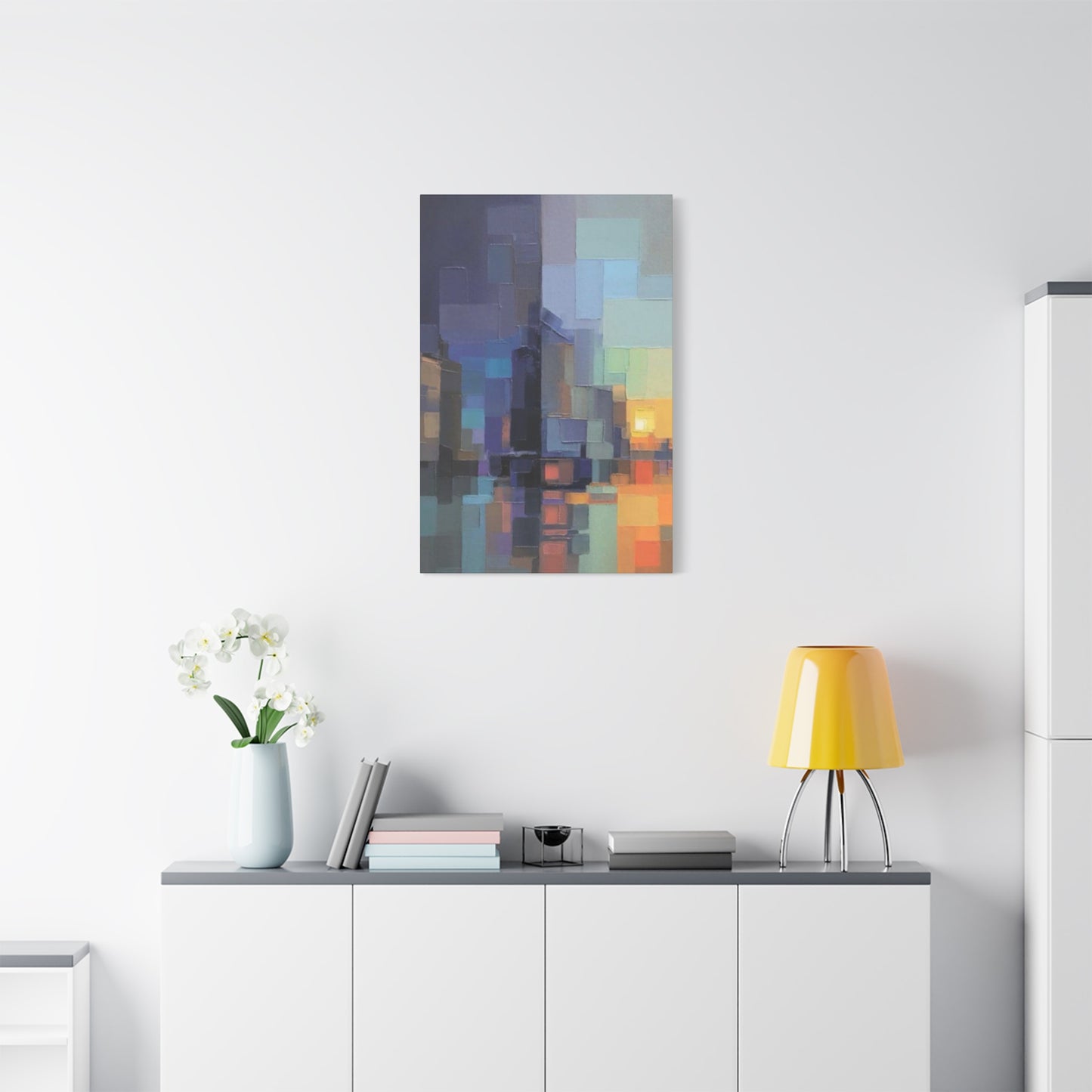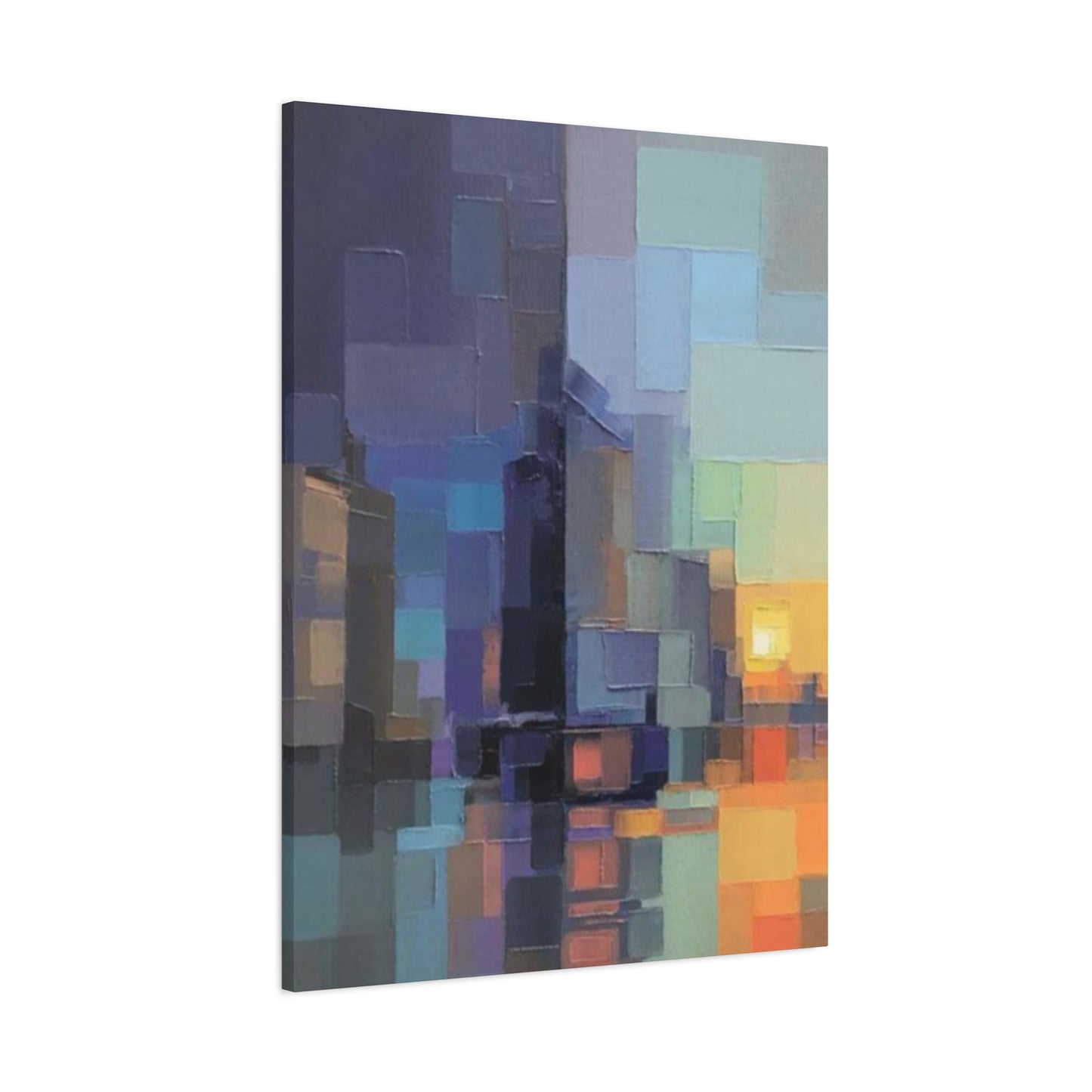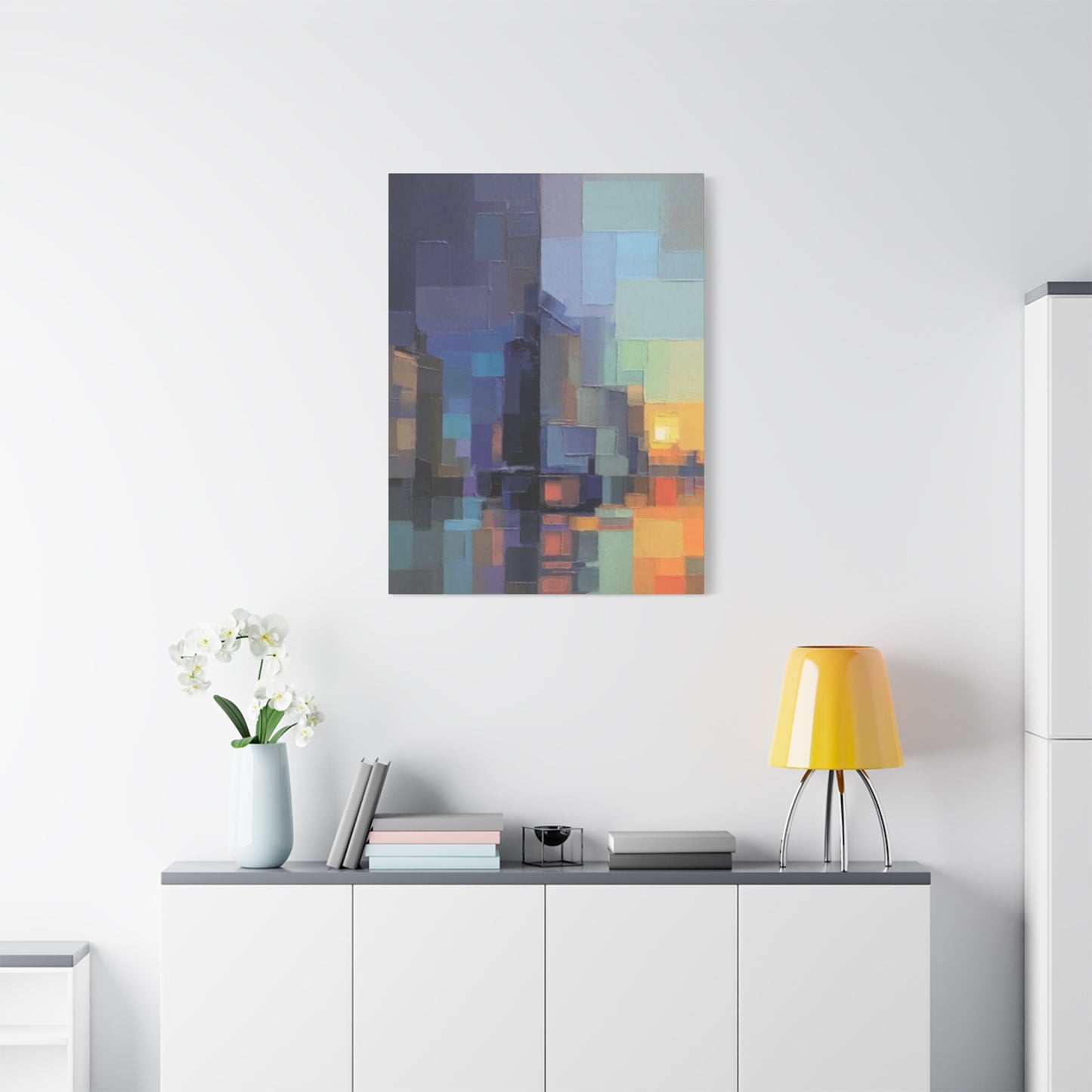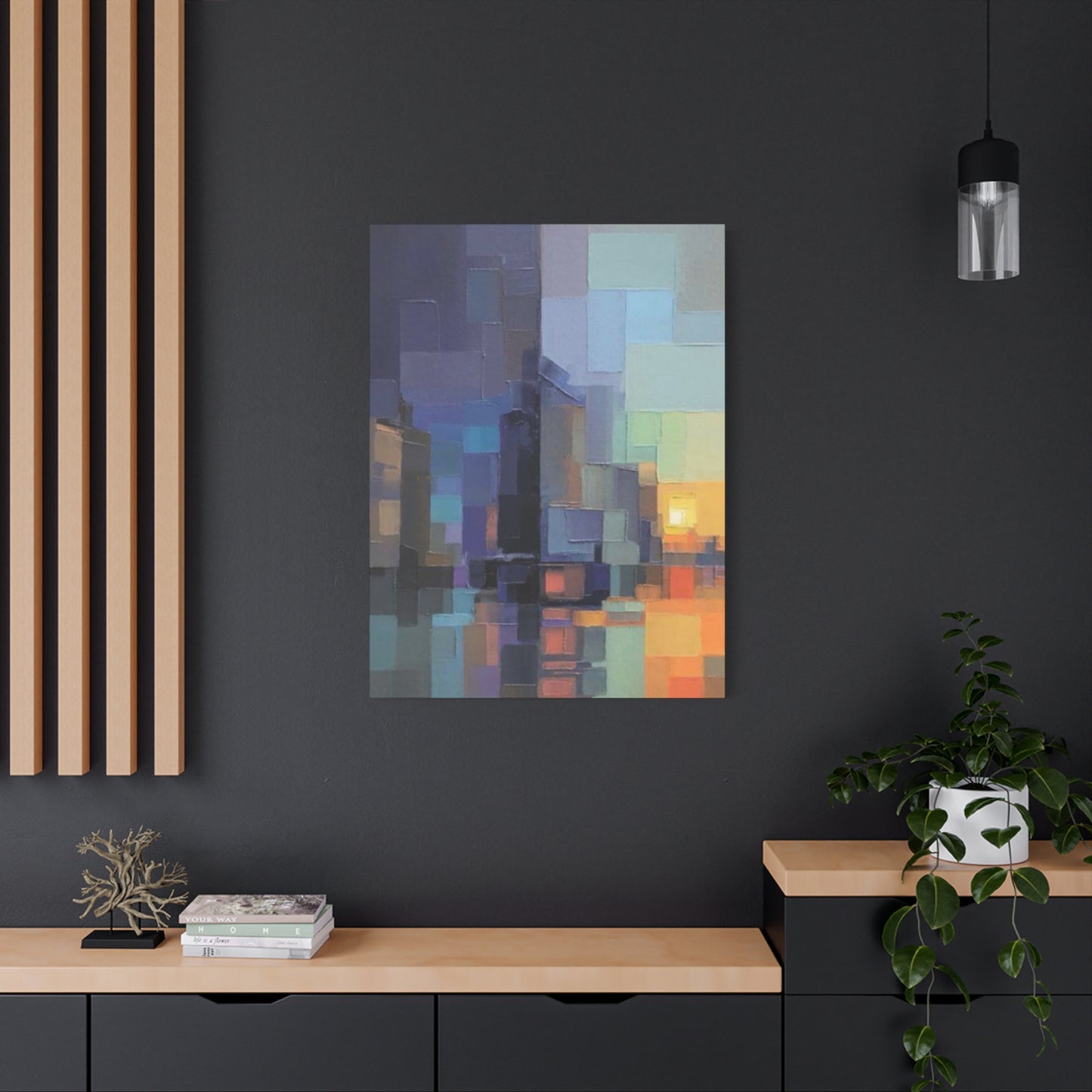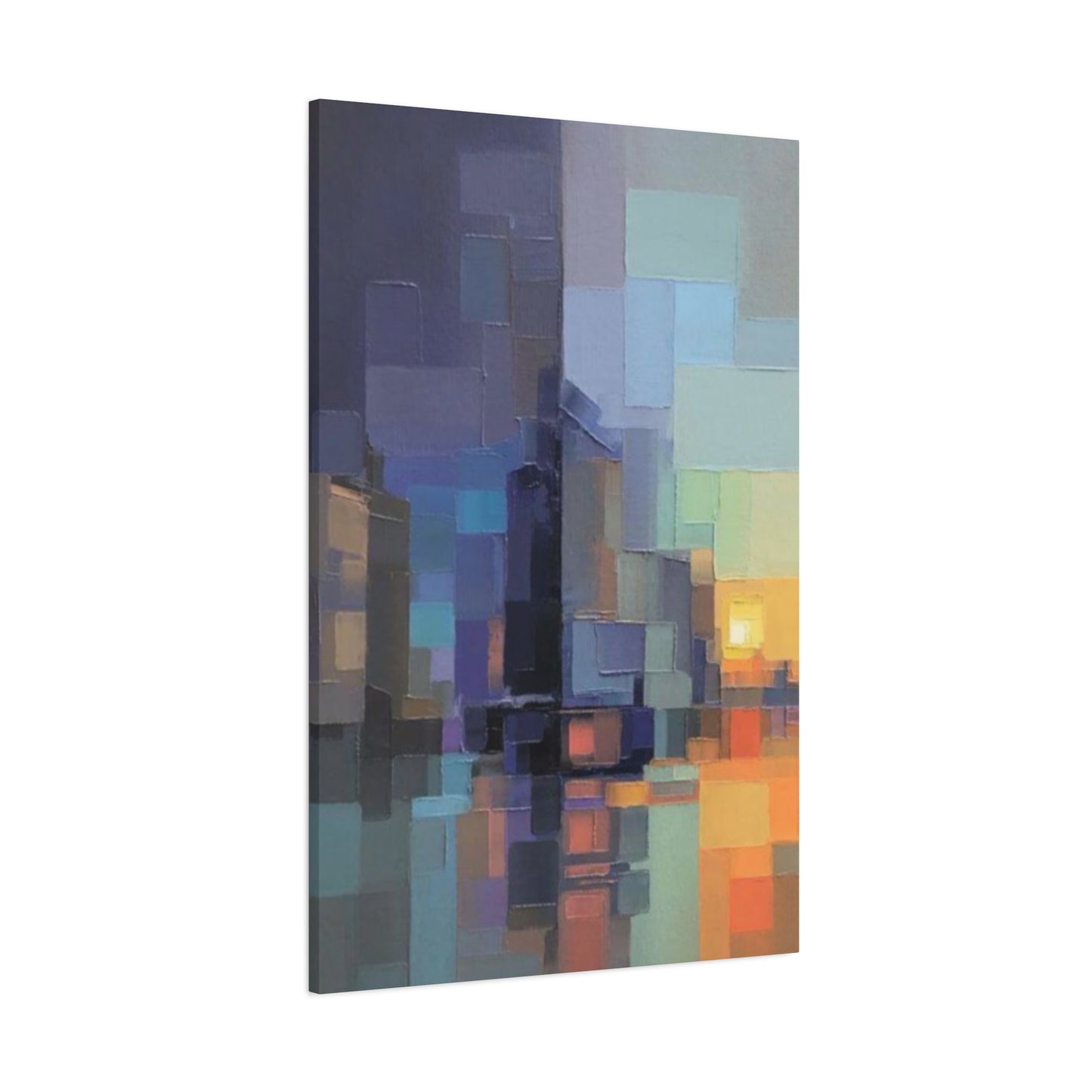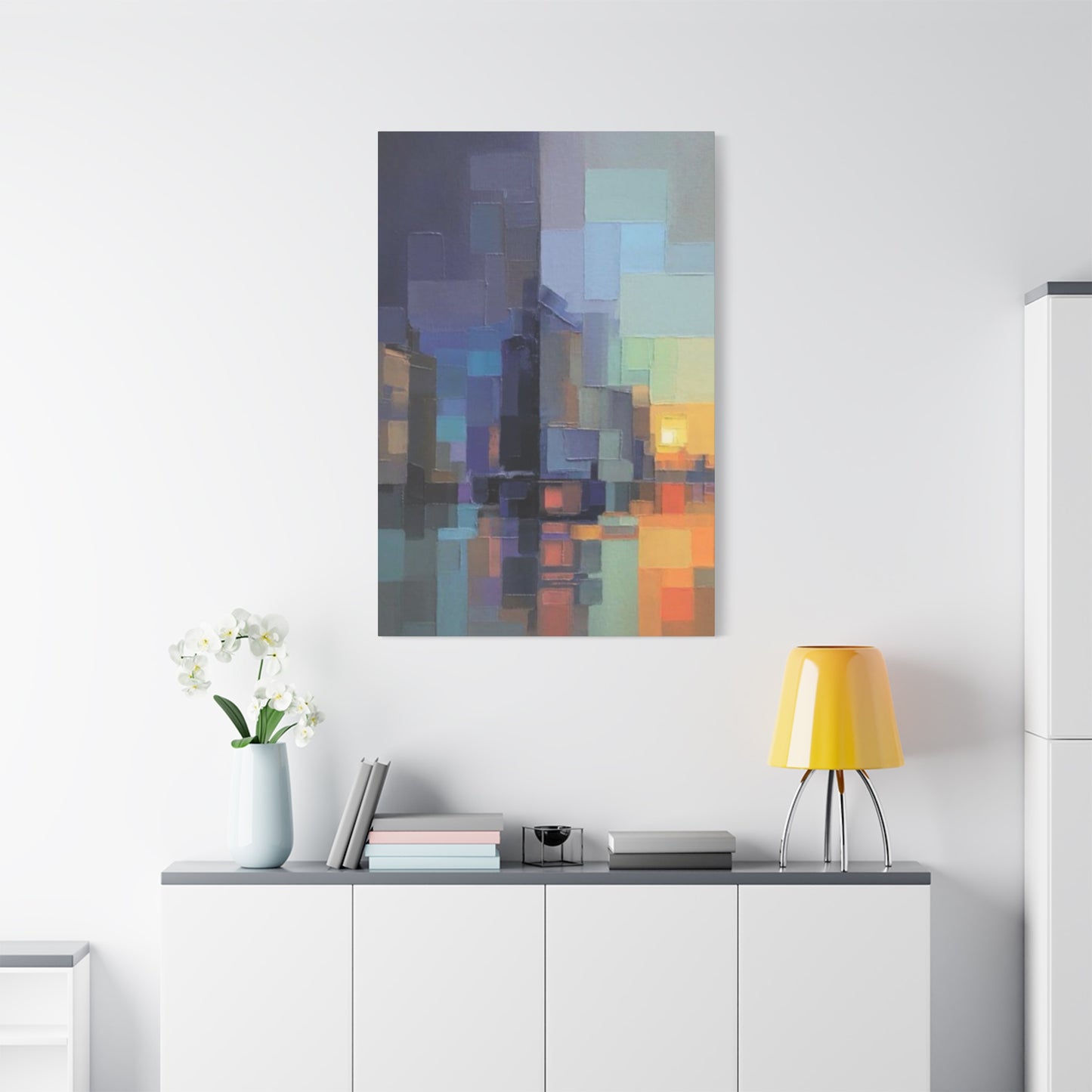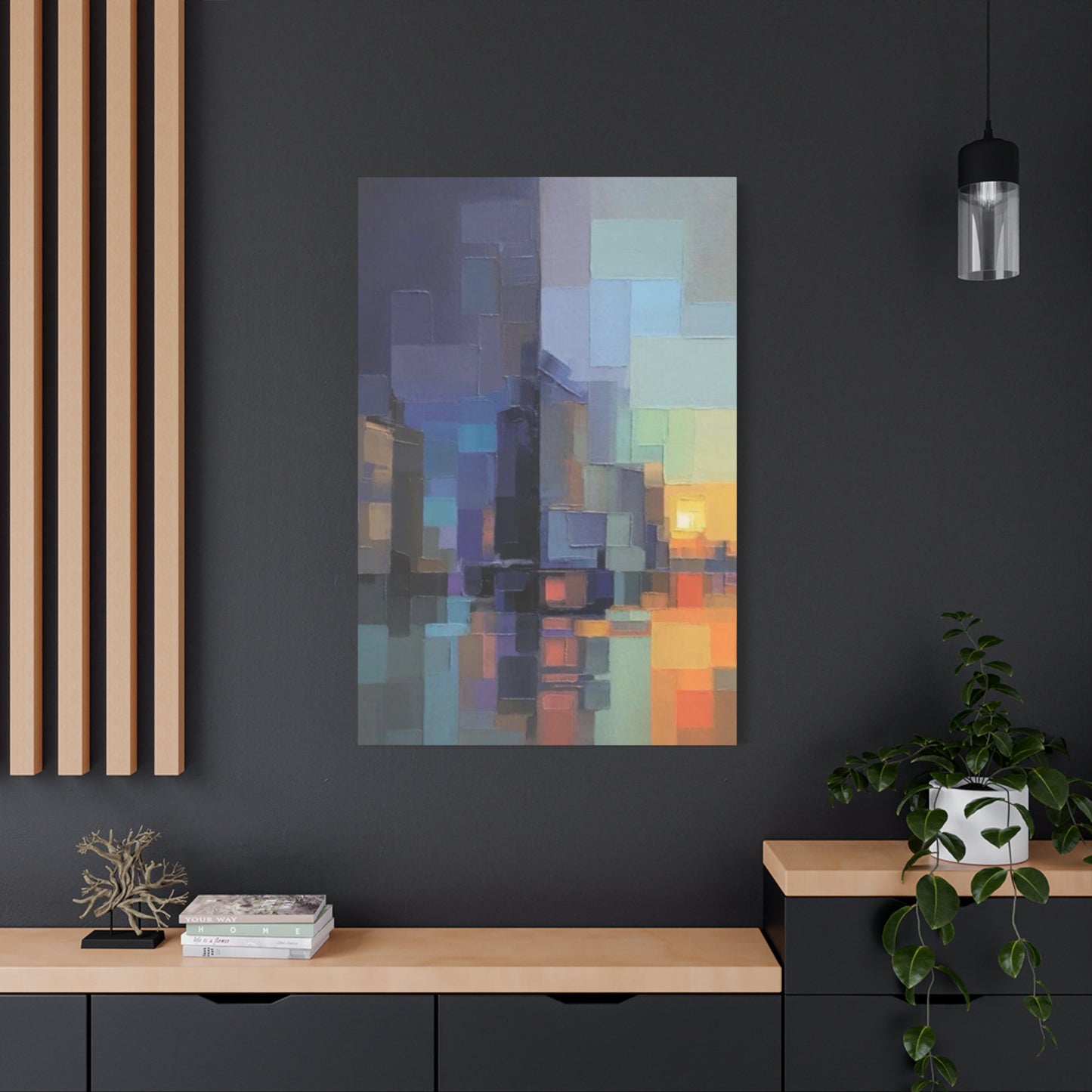Modern Abstract Cityscape Wall Art: Creative Expression in Contemporary Visual Arts
The contemporary art world has witnessed a remarkable evolution in urban-themed artistic expressions, particularly in the realm of abstract cityscape wall art. This fascinating genre combines the dynamic energy of metropolitan environments with innovative artistic techniques, creating visually stunning pieces that capture the essence of modern urban life through non-representational forms. Abstract cityscape wall art has emerged as a powerful medium for artists to interpret and reimagine the urban landscape, transforming recognizable city elements into extraordinary visual experiences that resonate with viewers on both emotional and aesthetic levels.
Abstract cityscape wall art represents more than just decorative pieces; it embodies a philosophical approach to understanding and representing the complexity of urban existence. These artworks serve as windows into the artist's perception of city life, offering unique interpretations of architectural forms, street patterns, and the rhythmic pulse of metropolitan areas. The genre has gained significant popularity among collectors, art enthusiasts, and homeowners seeking to incorporate sophisticated urban aesthetics into their living environments.
The significance of abstract cityscape wall art extends beyond mere visual appeal. These works function as cultural artifacts that document the contemporary urban experience while simultaneously questioning traditional approaches to landscape painting. By abstracting familiar urban elements, artists create new visual languages that speak to the universal experience of city living, regardless of geographical boundaries or cultural backgrounds.
Defining Abstract Modernism in Urban Artistic Expression
Abstract modernism in cityscape art represents a revolutionary departure from traditional representational approaches to urban landscape painting. This artistic movement emerged from the broader modernist tradition, incorporating elements of cubism, expressionism, and geometric abstraction to create unique interpretations of urban environments. Artists working within this framework abandon literal representation in favor of emotional and conceptual responses to the urban experience.
The philosophical foundation of abstract modernism in cityscape art rests on the belief that emotional truth can be more effectively communicated through non-representational forms than through literal depiction. Artists embrace distortion, simplification, and symbolic representation to convey the psychological impact of urban living. This approach allows for greater creative freedom and enables artists to explore themes of alienation, connectivity, energy, and transformation that characterize modern metropolitan life.
Contemporary practitioners of abstract modernism in cityscape art draw inspiration from various sources, including architectural photography, street art, digital media, and personal urban experiences. They employ diverse techniques such as gestural brushwork, collage, mixed media, and digital manipulation to create works that challenge conventional perceptions of urban landscapes. These artists often focus on capturing the emotional resonance of city living rather than documenting specific geographical locations.
The evolution of abstract modernism in cityscape art reflects broader cultural shifts in how society perceives and interacts with urban environments. As cities continue to grow and transform rapidly, artists respond by developing new visual vocabularies that can accommodate this constant change. Their work serves as both commentary and celebration of urban dynamism, offering viewers opportunities to experience familiar environments through fresh perspectives.
Modern technology has significantly influenced the development of abstract modernism in cityscape art. Digital tools enable artists to experiment with new forms of visual manipulation, creating hybrid works that blend traditional painting techniques with contemporary digital processes. This technological integration has expanded the possibilities for artistic expression while maintaining the core principles of abstract modernist philosophy.
Essential Characteristics of Abstract Urban Landscape Paintings
Abstract urban landscape paintings possess distinctive characteristics that set them apart from both traditional landscape art and purely abstract compositions. These works typically feature fragmented architectural forms, suggesting rather than explicitly depicting urban structures. Artists employ various degrees of abstraction, from semi-representational pieces that maintain recognizable urban elements to completely non-objective works that capture only the emotional essence of city environments.
Color relationships play a crucial role in defining abstract urban landscape paintings. Artists often utilize unexpected color combinations that deviate from naturalistic palettes, creating emotional responses that transcend literal representation. These color choices frequently reflect the artificial lighting conditions found in urban environments, incorporating electric blues, neon pinks, and industrial grays that characterize contemporary city life. The interplay between warm and cool tones creates visual tension that mirrors the dynamic nature of urban existence.
Compositional structure in abstract urban landscape paintings typically emphasizes vertical elements, reflecting the upward thrust of urban architecture. Artists experiment with overlapping forms, intersecting lines, and fragmented shapes to create visual complexity that suggests the layered nature of city environments. These compositional strategies often result in works that appear to be in constant motion, capturing the kinetic energy that defines metropolitan areas.
Texture plays a significant role in abstract urban landscape paintings, with artists employing various techniques to create surface interest that suggests urban materials and surfaces. Heavy impasto applications might represent the roughness of concrete and brick, while smooth, reflective areas could suggest glass and metal surfaces. Artists often incorporate unconventional materials such as sand, metal fragments, or synthetic materials to enhance textural variety and strengthen the connection to urban environments.
The scale relationships within abstract urban landscape paintings often reflect the overwhelming nature of city environments. Artists may juxtapose tiny human-scaled elements against massive architectural forms, emphasizing themes of individual insignificance within vast urban systems. Alternatively, they might focus on intimate urban details, magnifying small elements to monumental proportions and revealing the complex beauty hidden within everyday city scenes.
Symbolic representation frequently appears in abstract urban landscape paintings through the use of recurring motifs such as grids, intersecting lines, and geometric patterns that reference urban planning, architectural structures, and transportation systems. These symbolic elements allow artists to communicate complex ideas about urban life without relying on literal representation, creating works that operate on multiple levels of meaning and interpretation.
Implementing Vibrant Color Schemes in Contemporary Urban Art
The strategic use of bold colors in modern cityscape art serves as a powerful tool for emotional expression and visual impact. Contemporary artists working in this genre often abandon naturalistic color palettes in favor of heightened, expressive color schemes that capture the artificial and electric atmosphere of urban environments. These bold color choices function as emotional triggers, evoking specific feelings and associations related to city living.
Neon and electric colors play particularly important roles in modern cityscape art, reflecting the prevalence of artificial lighting in urban environments. Artists incorporate vivid pinks, electric blues, lime greens, and brilliant oranges to suggest the glow of street lights, advertising signs, and illuminated windows. These colors create visual excitement and energy that mirrors the 24-hour activity cycle characteristic of major metropolitan areas.
Complementary color relationships generate visual tension and dynamic contrast in bold cityscape artworks. Artists strategically place opposing colors adjacent to one another to create vibrating effects that suggest movement and energy. The use of complementary pairs such as orange and blue or red and green creates optical effects that draw viewers into the composition while maintaining visual stability through balanced color relationships.
Color temperature variations within individual works allow artists to create spatial depth and atmospheric effects. Warm colors appear to advance toward the viewer, while cool colors recede, enabling artists to construct compelling illusions of three-dimensional form within two-dimensional compositions. This technique proves particularly effective in suggesting the layered nature of urban environments where multiple planes of activity occur simultaneously.
Gradient transitions and color blending techniques enable artists to create atmospheric effects that suggest urban pollution, humidity, and the quality of light filtered through tall buildings. These subtle color variations add sophistication to bold color schemes while maintaining overall visual impact. Artists often employ spray techniques, wet-on-wet blending, and digital gradients to achieve these effects.
The psychological impact of bold colors in cityscape art cannot be understated. Warm colors such as reds, oranges, and yellows tend to create feelings of energy, excitement, and warmth, while cool colors like blues and purples can evoke feelings of calm, distance, or melancholy. Artists manipulate these psychological associations to guide viewers' emotional responses to their interpretations of urban environments.
Color symbolism adds additional layers of meaning to bold cityscape artworks. Red might represent the pulse of urban life or suggest danger and excitement, while blue could symbolize technology, corporate culture, or urban alienation. Artists often develop personal color vocabularies that enable them to communicate complex ideas about urban existence through carefully chosen color relationships.
Incorporating Geometric Elements in Abstract Urban Scenes
Geometric shapes serve as fundamental building blocks in abstract cityscape compositions, providing structure and visual organization that reflects the planned nature of urban environments. Artists employ various geometric forms including squares, rectangles, triangles, and circles to suggest architectural elements while maintaining abstract qualities that transcend literal representation. These geometric components create visual rhythms and patterns that echo the repetitive nature of urban construction and city planning.
Rectangular forms dominate many abstract cityscape compositions, naturally suggesting buildings, windows, and urban infrastructure. Artists manipulate these shapes through rotation, scaling, and overlapping to create dynamic compositions that capture the vertical thrust of urban architecture. The repetition of rectangular elements creates visual rhythm while variations in size and orientation prevent monotony and maintain viewer interest.
Triangular shapes introduce diagonal elements that add energy and movement to abstract cityscape compositions. These forms can suggest roof lines, architectural details, or abstract representations of urban growth and development. Artists often use triangular shapes to create directional flow within compositions, guiding viewers' eyes through complex visual arrangements.
Circular and curved elements provide contrast to the predominantly angular nature of urban environments. These forms might represent urban planning elements such as traffic circles, parks, or the organic flow of rivers through cities. The juxtaposition of curved and angular elements creates visual tension that reflects the complex relationship between natural and constructed environments within urban settings.
Grid systems underlying many abstract cityscape compositions reference urban planning principles and the organized structure of city layouts. Artists employ visible or implied grid systems to create compositional stability while allowing for creative variations within established frameworks. These grids can represent street systems, building patterns, or abstract organizational principles that govern urban development.
Overlapping geometric forms create spatial depth and suggest the layered complexity of urban environments. Artists use transparency effects, color variations, and scale relationships to suggest multiple planes of activity occurring simultaneously within city environments. These overlapping relationships mirror the way buildings, transportation systems, and human activity intersect in real urban settings.
The interaction between positive and negative forms within geometric compositions reflects the relationship between built and open areas in urban environments. Artists carefully balance filled and empty areas to create compositions that suggest both the density of urban construction and the importance of open areas such as streets, plazas, and parks within the urban fabric.
Influential Artists in Abstract Urban Art Movement
The abstract cityscape art movement has been shaped by numerous influential artists who have contributed unique approaches and techniques to this evolving genre. These pioneers have established foundational principles while continuing to push boundaries and explore new possibilities for urban artistic expression. Their collective contributions have defined the aesthetic parameters and conceptual framework that continue to influence contemporary practitioners.
Early modernist painters laid important groundwork for abstract cityscape art through their revolutionary approaches to urban subject matter. These artists began experimenting with fragmentation, color abstraction, and geometric simplification that would eventually evolve into the sophisticated abstract cityscape styles seen today. Their willingness to abandon traditional representational techniques opened new avenues for artistic exploration.
Contemporary artists working in abstract cityscape genres have expanded upon modernist foundations while incorporating current technologies and cultural perspectives. These practitioners often combine traditional painting techniques with digital media, photography, and mixed media approaches to create hybrid works that reflect the complexity of modern urban existence. Their diverse backgrounds and cultural perspectives contribute to the rich variety of styles and approaches within the movement.
Printmaking artists have made significant contributions to abstract cityscape art through their exploration of graphic techniques that naturally lend themselves to urban themes. The linear qualities inherent in printmaking processes align well with architectural subjects, while the reproducible nature of prints has helped democratize access to abstract cityscape art. Many artists working in this medium have developed distinctive visual languages that capture urban energy through bold graphic approaches.
Digital artists represent a growing segment of the abstract cityscape movement, utilizing computer-based tools to create works that would be impossible through traditional media alone. These artists often combine photographic elements with digital painting, 3D modeling, and algorithmic generation to create unique interpretations of urban environments. Their work frequently explores themes of technology, surveillance, and digital culture that increasingly define contemporary urban experience.
Street artists and muralists have contributed important perspectives to abstract cityscape art through their direct engagement with urban environments. These artists create works that exist within the very spaces they represent, establishing immediate connections between artwork and environment. Their approaches often incorporate local cultural elements and community perspectives that add authenticity and relevance to abstract urban representations.
Gallery artists working in abstract cityscape genres have developed sophisticated conceptual approaches that position their work within broader art historical contexts. These practitioners often engage with theoretical frameworks related to urban studies, sociology, and philosophy, creating works that function as both aesthetic objects and intellectual investigations into the nature of urban existence.
Strategies for Incorporating Abstract Urban Art in Residential Environments
Successfully integrating abstract cityscape wall art into residential settings requires careful consideration of scale, color relationships, and thematic coherence. Homeowners should evaluate their existing architectural features and decorative elements to determine how abstract urban artworks might complement or contrast with their current aesthetic. The goal is to create harmonious relationships that enhance both the artwork and the living environment.
Scale relationships play crucial roles in successful artwork placement. Large abstract cityscape pieces can serve as focal points in spacious rooms, commanding attention and establishing dramatic visual presence. Smaller works function effectively when grouped together, creating gallery walls that allow for exploration of related themes and styles. The vertical emphasis common in cityscape art makes these works particularly suitable for areas with high ceilings or narrow wall spaces.
Color coordination between artwork and existing decor requires thoughtful planning to achieve successful integration. Homeowners might choose abstract cityscape pieces that incorporate colors already present in their rooms, creating cohesive color schemes that unify diverse elements. Alternatively, they might select artworks featuring contrasting colors to create dynamic focal points that energize neutral decorative schemes.
Lighting considerations significantly impact how abstract cityscape artworks appear in residential settings. Natural lighting changes throughout the day, affecting color perception and visual impact. Artificial lighting should be carefully planned to complement artwork without creating glare or distortion. Track lighting, picture lights, or strategically placed lamps can enhance the viewing experience while protecting artworks from damage.
Thematic consistency within room settings helps create coherent visual narratives that enhance the impact of abstract cityscape art. Homeowners might choose to concentrate urban-themed artworks in specific areas, creating dedicated gallery zones that celebrate metropolitan aesthetics. Alternatively, they might distribute urban artworks throughout their homes, using them to create connecting visual threads that unify diverse living areas.
Room function should influence artwork selection and placement decisions. Abstract cityscape art featuring energetic compositions and bold colors works well in active areas such as living rooms, dining areas, and home offices where stimulating visual environments are appropriate. More subdued abstract urban pieces might be better suited for bedrooms or quiet reading areas where calming atmospheres are preferred.
The relationship between artwork and furniture requires careful consideration to avoid visual conflicts or competition for attention. Low-profile furniture allows tall, vertical cityscape artworks to achieve maximum impact, while substantial furniture pieces might benefit from smaller, more intimate urban art selections. The goal is to create balanced compositions that allow both artwork and furnishings to contribute to overall aesthetic success.
Blending Abstract and Representational Elements in Urban Art
The integration of abstract and realistic elements in cityscape art creates compelling visual experiences that combine the emotional power of abstraction with the immediate recognition of representational imagery. This hybrid approach allows artists to maintain connections to recognizable urban features while exploring creative possibilities that pure representation cannot accommodate. The resulting works often achieve greater accessibility while retaining sophisticated artistic merit.
Selective abstraction techniques enable artists to emphasize certain urban elements while subordinating others through varying degrees of representational clarity. Critical architectural features might be rendered with relative accuracy to maintain locational identity, while background elements undergo greater abstraction to create atmospheric effects. This selective approach guides viewers' attention while creating visual hierarchy within complex compositions.
Photorealistic details embedded within otherwise abstract compositions create compelling focal points that anchor viewers' understanding while allowing for creative interpretation of surrounding elements. These realistic elements might include recognizable architectural details, street furniture, or human figures that provide scale references and narrative content. The contrast between precise detail and abstract treatment creates visual tension that maintains viewer engagement.
Layering techniques allow artists to combine photographic elements with painted or drawn abstractions, creating rich visual textures that suggest the complexity of urban environments. Digital artists particularly excel at this approach, seamlessly blending multiple media types to create works that exist between photography and painting. These layered compositions often reveal additional details upon closer examination, rewarding extended viewing.
Color treatment serves as a unifying element when combining abstract and realistic components within single compositions. Artists might apply consistent color schemes across both abstract and representational elements, creating visual coherence despite varied rendering approaches. Alternatively, they might use color temperature or saturation differences to distinguish between abstract and realistic components while maintaining overall compositional unity.
Stylistic transitions within individual works guide viewers from representational understanding toward abstract interpretation. Artists might begin compositions with recognizable urban elements that gradually dissolve into pure abstraction, taking viewers on visual journeys from the familiar toward the unknown. These transitional approaches create dynamic viewing experiences that evolve as viewers explore different areas of the composition.
Scale manipulation enables artists to combine realistic details with abstract elements by presenting familiar urban features at unexpected sizes. Tiny architectural details might be magnified to monumental proportions while maintaining realistic rendering, surrounded by abstract elements that provide contextual framework. This approach creates surreal effects that challenge viewers' perceptions while maintaining visual accessibility.
Minimalist Approaches to Contemporary Urban Art
Minimalist cityscape art embraces the principle that less can be more, distilling urban complexity into essential visual elements that capture the essence of metropolitan environments through carefully reduced means. This approach requires artists to identify the most crucial aspects of urban experience and eliminate superfluous details that might distract from core messages. The resulting works achieve powerful impact through economy of means and sophisticated editing.
Color reduction represents a fundamental strategy in minimalist cityscape art, with artists limiting their palettes to create maximum impact through minimal means. Monochromatic schemes or limited color palettes force viewers to focus on compositional relationships, textural variations, and conceptual content rather than being distracted by complex color interactions. These restricted palettes often reflect the industrial nature of urban environments.
Geometric simplification transforms complex urban architecture into essential shapes and forms that maintain recognizable urban characteristics while achieving abstract clarity. Buildings become simple rectangles, streets transform into linear elements, and urban infrastructure reduces to basic geometric relationships. This simplification process requires careful editing to preserve essential urban qualities while eliminating unnecessary complexity.
Negative area utilization plays crucial roles in minimalist cityscape compositions, with empty areas functioning as active elements that balance and complement positive forms. These negative areas might represent sky, water, or simply conceptual breathing room that allows viewers' eyes to rest and contemplate the relationships between active elements. The careful balance between filled and empty areas creates sophisticated compositional dynamics.
Line quality becomes paramount in minimalist approaches, with each mark carrying significant compositional weight. Artists must make deliberate decisions about line thickness, texture, and direction to maximize expressive impact. Clean, precise lines might suggest the engineered nature of urban construction, while rough, gestural marks could convey the human energy present within metropolitan environments.
Material selection in minimalist cityscape art often emphasizes the inherent qualities of chosen media rather than attempting to disguise or transform them. Artists might exploit the natural characteristics of charcoal, ink, or digital media to create works that celebrate both urban content and artistic process. This honest approach to materials aligns with minimalist philosophy while creating authentic artistic expressions.
Compositional focus requires artists to establish clear hierarchies that guide viewers' attention toward intended focal points. In minimalist work, every element must justify its presence and contribute to overall artistic goals. This discipline results in compositions that achieve maximum impact through careful selection and precise placement of visual elements.
Urban Skyline Abstractions as Contemporary Wall Art Trends
Urban skyline abstractions have emerged as particularly popular expressions within contemporary wall art markets, appealing to collectors and decorators seeking sophisticated urban aesthetics without the complexity of highly detailed representational works. These compositions typically feature horizontal formats that emphasize the characteristic profile views of city skylines while incorporating abstract elements that universalize their appeal beyond specific geographical locations.
The horizontal orientation inherent in skyline compositions makes them particularly suitable for contemporary architectural environments where wall areas tend to be wider than they are tall. These formats work effectively above sofas, beds, and console tables where horizontal emphasis complements furniture proportions. The panoramic quality of skyline abstractions creates expansive visual effects that can make rooms appear larger and more open.
Silhouette techniques form the foundation of many skyline abstractions, with artists reducing urban profiles to essential shapes that maintain recognizable characteristics while allowing for creative interpretation. These simplified silhouettes can be rendered in solid colors, gradients, or textural treatments that suggest various times of day, weather conditions, or emotional moods. The simplicity of silhouette approaches makes skyline abstractions accessible to diverse audiences.
Layering effects enable artists to create depth and complexity within skyline compositions by suggesting multiple planes of urban development. Foreground, middle ground, and background elements create spatial recession while maintaining the essential flatness that characterizes skyline views. These layering techniques often incorporate transparency effects that suggest atmospheric perspective and urban haze.
Color temperature variations across skyline compositions can suggest specific times of day or seasonal conditions while maintaining abstract qualities. Warm colors might dominate foreground elements while cooler tones recede toward horizons, creating natural depth effects. Artists often use gradient transitions that move from warm to cool or light to dark to enhance these spatial illusions.
Rhythmic patterns within skyline abstractions reflect the repetitive nature of urban architecture while creating visually engaging compositions. Variations in building heights, spacing, and proportional relationships create visual rhythms that prevent monotony while maintaining the essential character of urban profiles. These rhythmic elements often function as compositional melodies that guide viewers' eyes across horizontal formats.
Abstract interpretation allows skyline compositions to transcend specific geographical references, creating universal urban statements that appeal to broad audiences. By eliminating identifying landmarks or distinctive architectural features, artists create works that can represent any city or suggest ideal urban environments. This universality contributes to the commercial success of skyline abstractions in contemporary art markets.
Techniques for Creating Dimensional Depth in Abstract Urban Compositions
Creating convincing dimensional depth in abstract cityscape paintings requires sophisticated understanding of spatial relationships and the various techniques artists can employ to suggest three-dimensional form within two-dimensional media. These methods enable artists to capture the layered complexity of urban environments while maintaining the expressive freedom that abstraction provides. Successful depth creation enhances viewer engagement by creating immersive visual experiences.
Atmospheric perspective serves as a fundamental technique for suggesting depth in abstract urban compositions. This approach involves gradually reducing contrast, clarity, and color saturation in background elements while maintaining strong contrast and sharp focus in foreground areas. The technique mimics natural atmospheric effects that occur when viewing distant objects through layers of air and urban pollution.
Overlapping forms create immediate depth perception by establishing clear spatial relationships between different elements. When one shape partially covers another, viewers automatically interpret the covered shape as being farther away. Artists can exploit this perceptual tendency by carefully orchestrating overlapping relationships that guide viewers through compositions from foreground to background.
Scale variations contribute significantly to depth perception, with larger elements appearing closer to viewers while smaller elements seem more distant. Artists working in abstract cityscape genres often exaggerate these scale relationships to create dramatic depth effects that capture the overwhelming nature of urban environments. The contrast between tiny human-scale details and massive architectural forms enhances the sense of urban magnitude.
Color temperature progression utilizes the natural tendency of warm colors to advance while cool colors recede. Artists strategically place warm colors in foreground areas and cool colors in background regions to create natural depth progressions. This technique proves particularly effective in urban subjects where artificial lighting creates complex temperature relationships throughout compositions.
Linear perspective principles can be adapted for abstract compositions through the strategic use of converging lines and directional elements. While maintaining abstract qualities, artists can suggest spatial recession through careful manipulation of linear elements that reference urban infrastructure such as streets, building edges, or transportation systems. These perspective cues function subconsciously to enhance depth perception.
Textural variations contribute to depth perception through the principle that detailed, rough textures appear closer while smooth, simple textures seem more distant. Artists can create depth hierarchies by varying the complexity and tactile quality of surface treatments throughout their compositions. Heavy impasto in foreground areas contrasting with smooth background treatments exemplifies this approach.
Directional brushwork can suggest spatial movement and dimensional form through careful manipulation of mark-making directions. Diagonal strokes might suggest receding planes while horizontal and vertical marks establish picture plane references. The varied energy and direction of brushstrokes creates visual pathways that guide viewers through three-dimensional space.
Acrylic Painting Methods for Contemporary Urban Art
Acrylic paint offers exceptional versatility for creating modern cityscape art due to its quick-drying properties, intense color availability, and compatibility with various techniques and additives. Contemporary artists working in urban themes have developed sophisticated approaches that exploit acrylic's unique characteristics while pushing the boundaries of traditional painting methods. These techniques enable artists to capture the energy and complexity of metropolitan environments through innovative applications.
Fast-drying advantages of acrylic paint allow artists to work in layers without extensive waiting periods, enabling rapid development of complex urban compositions. This characteristic proves particularly valuable when creating works that require multiple transparent glazes to achieve atmospheric effects or when building up textural passages that suggest urban surfaces. Artists can complete works more quickly while maintaining control over each developmental stage.
Color mixing properties of acrylic paint enable artists to achieve both subtle gradations and bold contrasts that capture the diverse lighting conditions found in urban environments. The paint's ability to maintain color integrity when mixed allows for precise color matching and sophisticated color relationships. Artists can create custom colors that precisely match their urban observations or develop expressive palettes that transcend natural color limitations.
Texture creation techniques using acrylic paint range from subtle surface variations to dramatic impasto applications that suggest urban materials and surfaces. Artists can incorporate sand, gel mediums, or modeling paste to create textural effects that reference concrete, metal, glass, and other urban materials. These textural elements add tactile dimension to works while enhancing their connection to urban subject matter.
Transparency effects achieved through acrylic glazing techniques enable artists to create complex spatial relationships that suggest urban atmosphere and layered construction. Multiple transparent layers can simulate the effects of glass, reflective surfaces, or atmospheric haze while maintaining color clarity. These glazing techniques prove particularly effective for suggesting the complex light interactions characteristic of urban environments.
Mixed media compatibility of acrylic paint allows artists to incorporate collage elements, digital prints, or found materials into their urban compositions. The paint's adhesive properties enable secure attachment of various materials while its covering power allows for seamless integration of diverse elements. This mixed media capability enables artists to incorporate actual urban materials into their artistic interpretations.
Application techniques for acrylic paint include traditional brush methods as well as innovative approaches using palette knives, sponges, spray bottles, and unconventional tools. Each application method creates distinctive textural and visual effects that can enhance urban subject matter. Artists often combine multiple application techniques within single works to create varied surface qualities that reference the diverse materials found in urban environments.
Color permanence and archival quality of professional-grade acrylic paints ensure that urban artworks maintain their visual impact over time. This permanence proves particularly important for works intended as long-term decorative elements or investment pieces. Artists can work confidently knowing that their color choices and artistic efforts will remain stable throughout the lifetime of their works.
Monochromatic Abstract Urban Artwork
Black and white abstract cityscape art represents a sophisticated approach that emphasizes compositional relationships, tonal values, and textural contrasts without the complexity of color interactions. This reductive approach forces both artists and viewers to focus on fundamental visual elements while creating dramatic effects that capture the essential character of urban environments. The absence of color paradoxically can intensify emotional impact and create timeless aesthetic appeal.
Tonal value relationships become paramount in monochromatic urban abstractions, with artists using the full range from pure white to deep black to create compelling visual hierarchies. These value contrasts can suggest dramatic lighting conditions characteristic of urban environments, such as street lighting at night, harsh shadows between buildings, or the glow of illuminated windows. Careful value orchestration creates depth and visual interest without relying on color variation.
Contrast manipulation enables artists to create focal points and guide viewer attention through purely tonal means. High contrast areas naturally attract attention and can represent areas of urban activity or architectural importance, while low contrast regions might suggest atmospheric effects or quiet urban areas. This selective contrast control allows artists to create sophisticated visual narratives through tonal relationships alone.
Textural emphasis gains increased importance in monochromatic works, as surface variations provide visual interest that might otherwise come from color changes. Artists can exploit various mark-making techniques to create textural vocabularies that reference urban materials and surfaces. Rough textures might suggest concrete or brick surfaces, while smooth areas could represent glass or metal architectural elements.
Graphic quality inherent in black and white compositions creates strong visual impact that works effectively in contemporary environments. These works often possess poster-like qualities that command attention while maintaining sophisticated artistic merit. The graphic nature of monochromatic urban abstractions makes them particularly suitable for modern architectural settings where clean, bold visual statements are appropriate.
Pattern creation through repetitive tonal elements can suggest urban rhythms such as building patterns, window arrangements, or street grids. These repetitive elements create visual music that captures the organized chaos characteristic of metropolitan environments. Artists can vary pattern density and regularity to suggest different urban conditions or energy levels.
Photographic references often influence monochromatic urban abstractions, with artists drawing inspiration from dramatic black and white urban photography. However, the abstract interpretation allows for creative manipulation of photographic source material to achieve expressive rather than documentary goals. This relationship between photography and painting creates hybrid works that exist between different media traditions.
Contemporary relevance of black and white urban abstractions lies in their ability to suggest both historical urban photography traditions and current digital aesthetics. These works can evoke the documentary tradition of urban photography while maintaining contemporary abstract sensibilities, creating pieces that appeal to diverse aesthetic preferences and cultural references.
Surface Treatment and Texture in Abstract Urban Wall Art
Textural elements in abstract cityscape wall art serve multiple functions, from creating visual interest and tactile appeal to suggesting the material qualities characteristic of urban environments. Artists working in this genre have developed sophisticated approaches to surface treatment that enhance the connection between their artworks and the metropolitan subjects they interpret. These textural strategies contribute significantly to the overall impact and authenticity of urban abstract expressions.
Additive techniques allow artists to build up surface textures that physically project from picture planes, creating tactile elements that invite closer inspection. Materials such as modeling paste, sand, crushed glass, or actual urban debris can be incorporated into paint to create authentic textural references to city surfaces. These additive approaches create works that engage viewers through both visual and tactile sensations.
Subtractive methods involve removing paint or media to create textural variations that suggest wear, weathering, or urban decay. Artists might scrape, sand, or scratch surface areas to reveal underlying layers or support materials, creating effects that reference the worn surfaces characteristic of urban environments. These techniques add authenticity to works while creating visual interest through varied surface treatments.
Layering strategies enable artists to create complex textural relationships through multiple applications of different materials and techniques. Each layer contributes to overall textural vocabulary while maintaining individual identity. This approach allows for sophisticated surface development that captures the accumulated complexity of urban environments where multiple construction phases and weathering effects create rich visual textures.
Mark-making variety contributes to textural richness through the employment of diverse tools and techniques for paint application. Artists might use brushes, palette knives, sponges, rags, or unconventional implements to create distinctive mark types that reference different urban materials or surfaces. The combination of varied mark-making approaches within single works creates textural conversations that maintain viewer interest.
Scale relationships in textural treatments range from fine, detailed surface variations to bold, dramatic textural statements. Small-scale textures might suggest architectural details or surface weathering, while large-scale textural elements could reference major urban infrastructure or dramatic architectural features. The interplay between different textural scales creates visual complexity that mirrors the multi-layered nature of urban environments.
Light interaction with textural surfaces creates dynamic visual effects that change as viewers move relative to artworks or as lighting conditions vary throughout the day. Raised textural elements cast shadows and catch highlights that animate surface areas and add temporal dimensions to static works. This light interaction creates living qualities that reflect the constantly changing nature of urban lighting conditions.
Material authenticity can be enhanced through the incorporation of actual urban materials such as concrete dust, metal fragments, or weathered papers into artistic compositions. These authentic materials establish immediate connections to urban environments while adding unique textural qualities that cannot be achieved through paint alone. The use of found urban materials also adds conceptual depth to works by literally incorporating city elements into artistic interpretations.
Depicting Metropolitan Life Through Non-Representational Art
Urban life portrayal through abstract art requires artists to distill the essential qualities of metropolitan existence into visual elements that communicate emotional and conceptual content without relying on literal representation. This approach enables artists to address universal aspects of city living while maintaining creative freedom to explore personal interpretations and artistic innovation. The resulting works often achieve greater emotional resonance than purely descriptive approaches.
Energy representation forms a central concern for artists seeking to capture urban life through abstract means. Metropolitan environments pulse with constant activity, movement, and change that can be suggested through dynamic compositional arrangements, energetic mark-making, and rhythmic visual elements. Artists often employ diagonal lines, fragmented forms, and gestural brushwork to convey the kinetic quality of urban existence.
Psychological aspects of city living including isolation, excitement, overwhelm, and connectivity can be addressed through abstract visual strategies. Color choices, spatial relationships, and compositional arrangements all contribute to psychological interpretation of urban experience. Dark, compressed compositions might suggest urban claustrophobia, while open, light-filled arrangements could represent the liberating aspects of metropolitan life.
Social dynamics within urban environments can be suggested through abstract relationships between visual elements. Clustering, separation, overlapping, and intersection of abstract forms can reference the complex social interactions that characterize city living. These visual relationships create metaphorical content that addresses human connection and isolation within metropolitan contexts.
Temporal rhythms of urban life including daily cycles, seasonal changes, and historical development can be incorporated into abstract compositions through various visual strategies. Repetitive elements might suggest daily routines, while gradual transitions could reference seasonal or historical changes. The layering of different temporal references creates works that address the complex relationship between past, present, and future in urban environments.
Cultural diversity characteristic of metropolitan areas can be addressed through varied visual vocabularies within single compositions. Different mark-making styles, color palettes, or compositional approaches might reference diverse cultural influences that combine within urban environments. This visual diversity creates rich, complex works that celebrate metropolitan multiculturalism through abstract means.
Economic stratification and social inequality present in urban environments can be suggested through contrasting visual treatments within abstract compositions. Areas of rich detail and vibrant color might contrast with sparse, monochromatic regions, creating visual metaphors for economic disparity. These abstract approaches enable artists to address social issues without resorting to obvious political imagery.
Final Thoughts
Modern abstract cityscape wall art represents a fascinating fusion of urban inspiration and artistic innovation, capturing the dynamic spirit of contemporary life in visual form. Unlike traditional cityscape paintings that focus on realistic depictions, abstract cityscape art transcends literal representation to explore emotions, moods, and the essence of the urban environment through color, form, and texture. This creative approach invites viewers to engage with the cityscape on a deeper, more personal level, interpreting the energy and complexity of modern cities in their own unique ways.
One of the defining features of modern abstract cityscape wall art is its ability to evoke the vibrancy and chaos of urban life while maintaining a sense of harmony and balance. Artists often use bold, fragmented shapes, layered patterns, and contrasting colors to symbolize the multifaceted nature of city living — from towering skyscrapers to bustling streets and quiet pockets of solitude. This method of abstraction allows the artwork to serve not just as a visual representation but as a narrative, telling stories of movement, growth, and change that characterize contemporary cities.
Moreover, this genre of wall art reflects broader trends in contemporary visual arts, where experimentation and personal expression are paramount. The blending of abstraction with urban themes challenges traditional boundaries and encourages a dialogue between the artwork, the space it inhabits, and its audience. It also underscores the role of art as a reflection of societal evolution, where the city itself becomes a metaphor for modern existence—complex, diverse, and constantly evolving.
In conclusion, modern abstract cityscape wall art stands as a compelling testament to the creative possibilities within contemporary visual arts. By transforming the familiar urban landscape into an imaginative and interpretive experience, it offers both artists and viewers a platform to explore the ever-changing relationship between humanity and the environments we build. This art form not only beautifies spaces but also enriches our understanding of the cities we live in and the emotions they inspire.

















